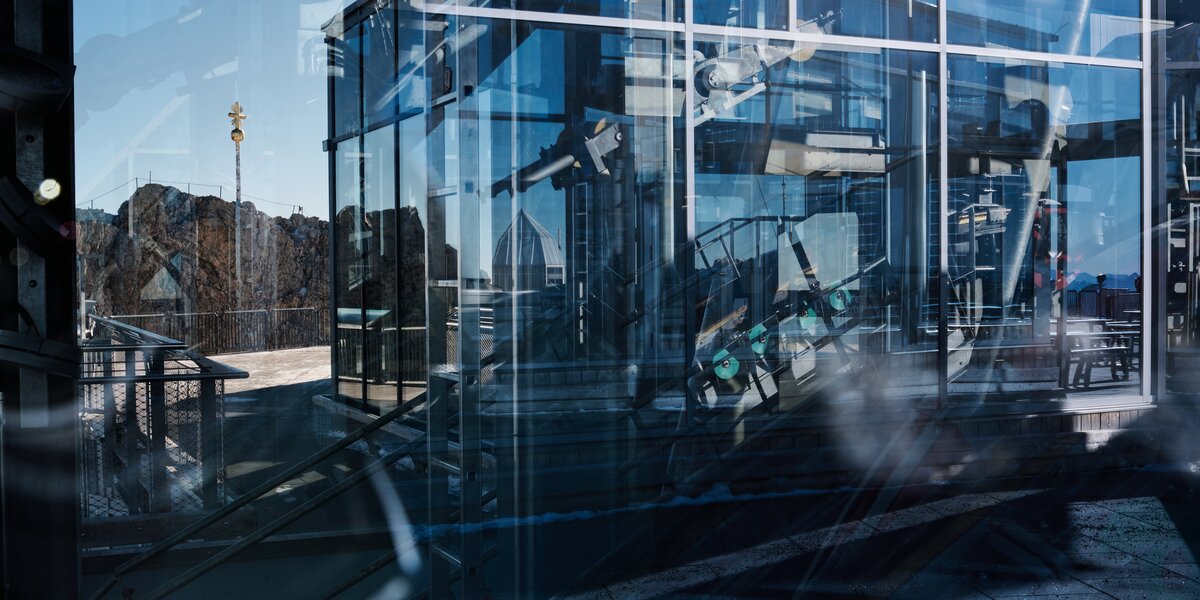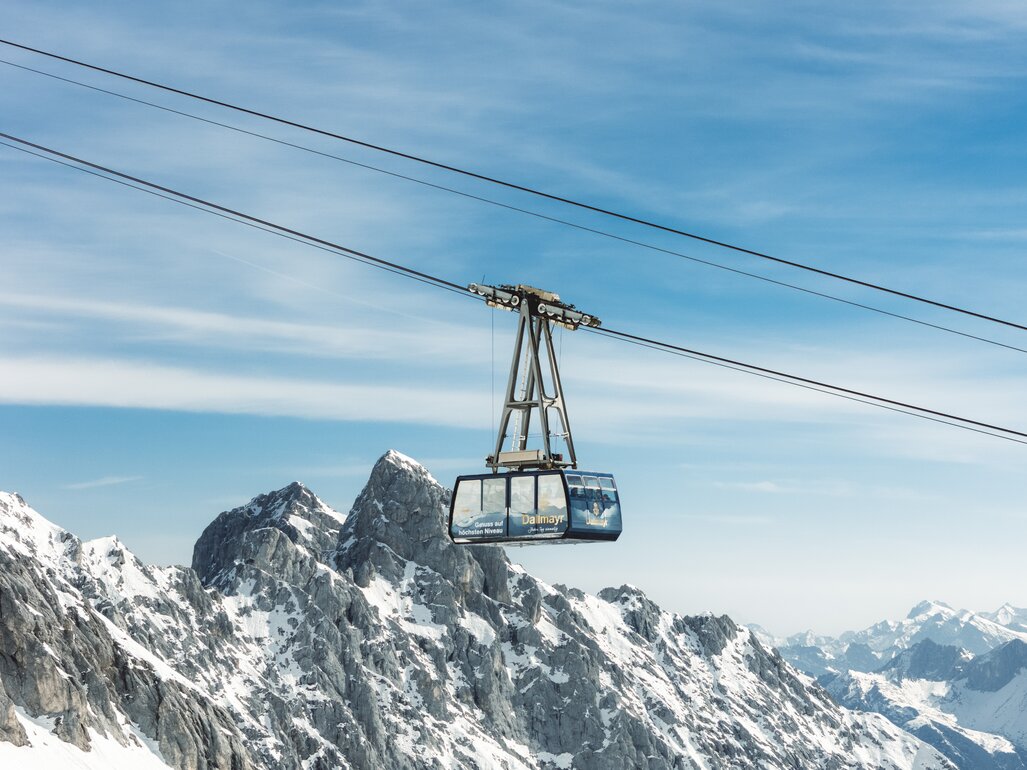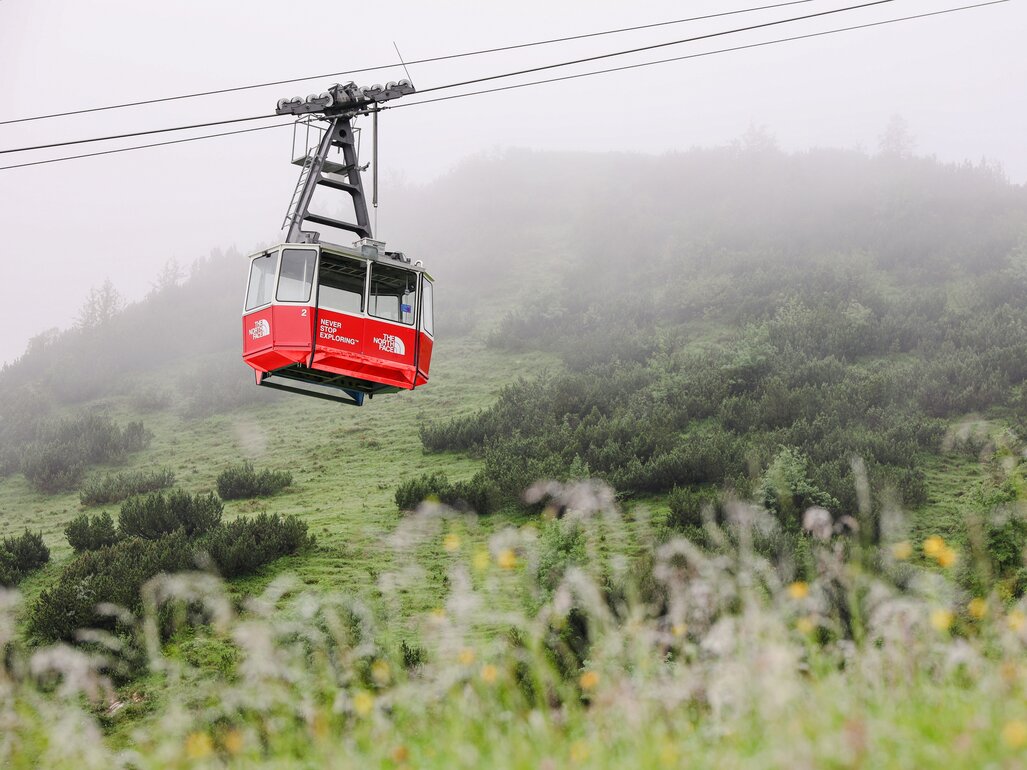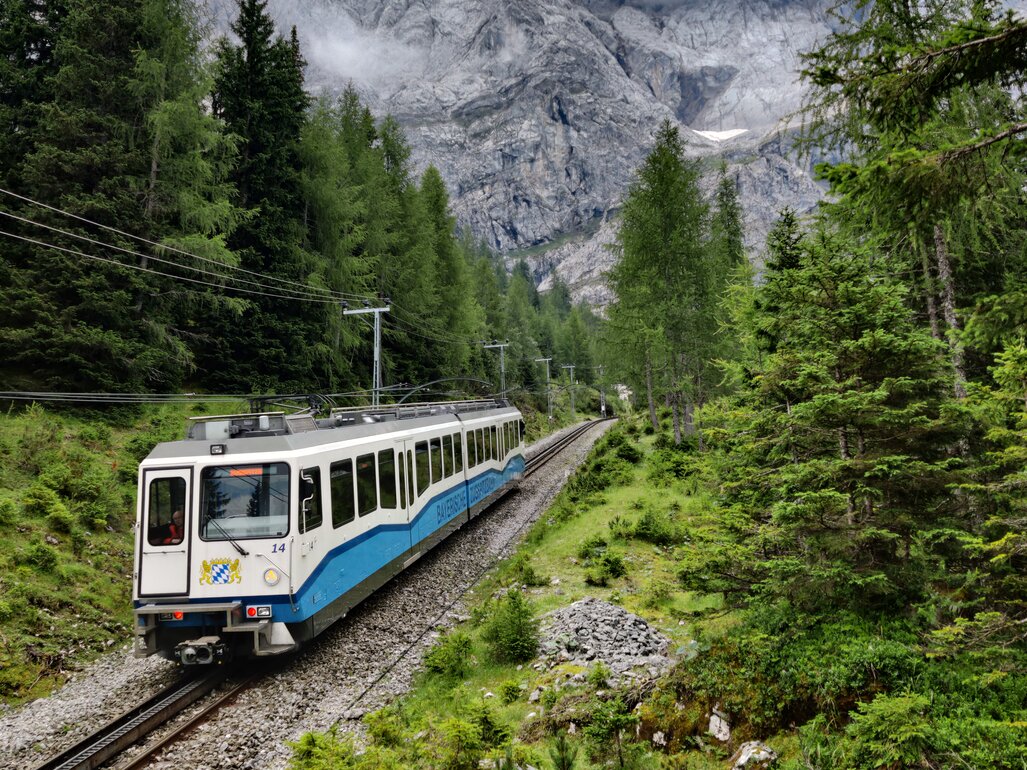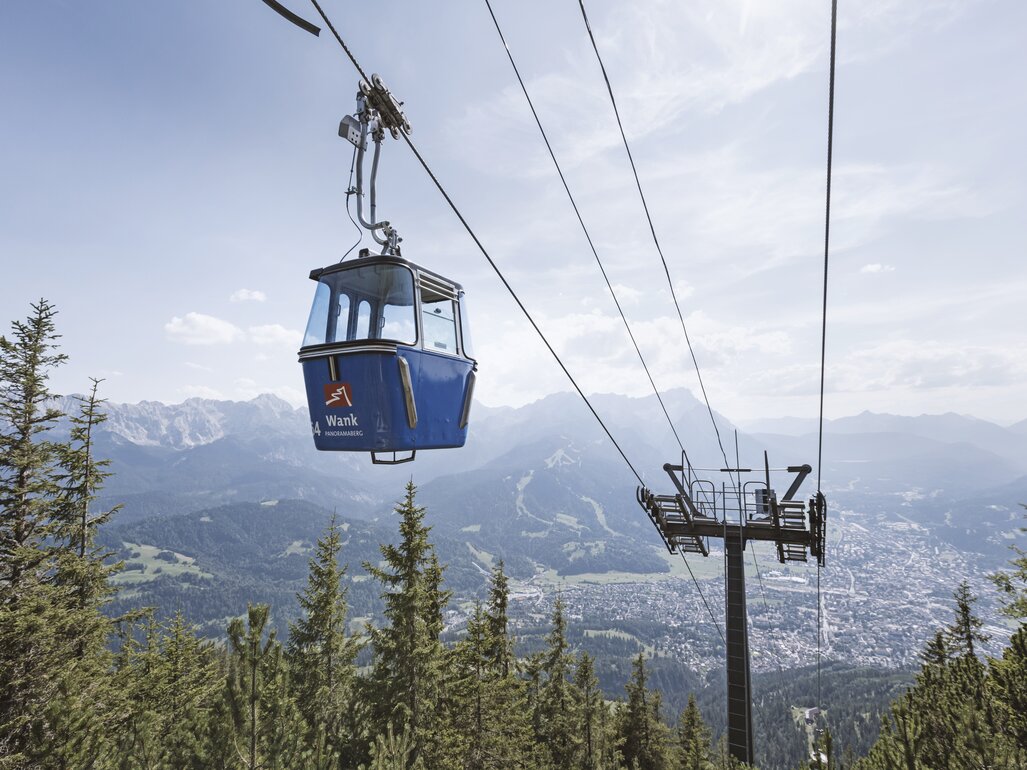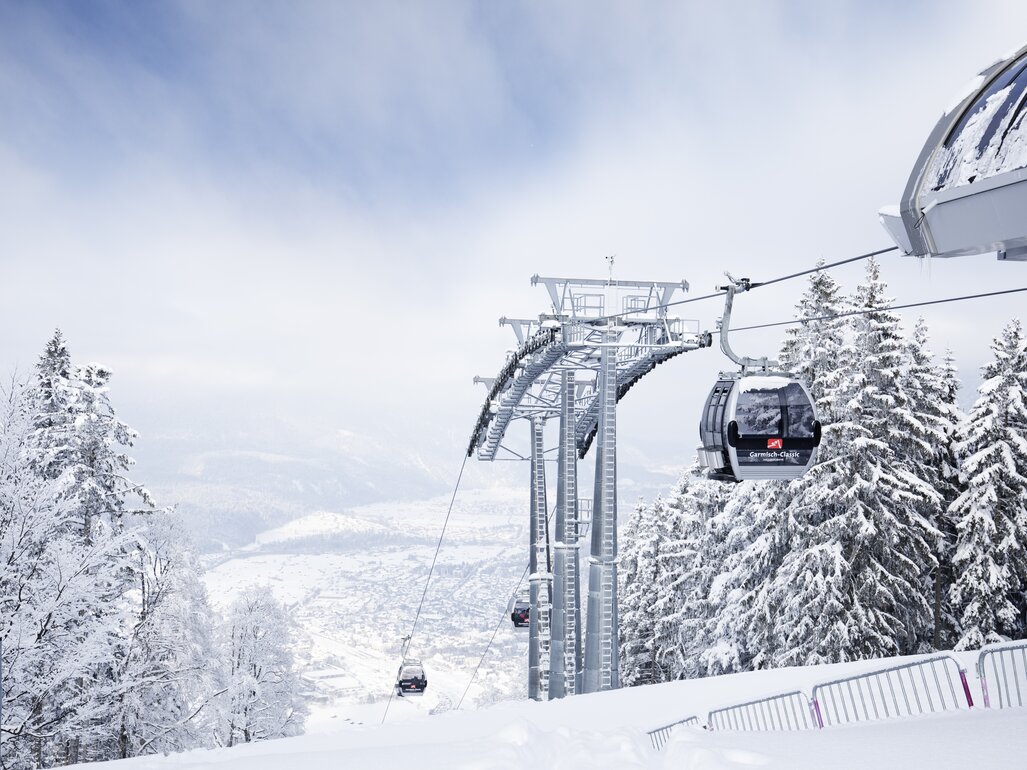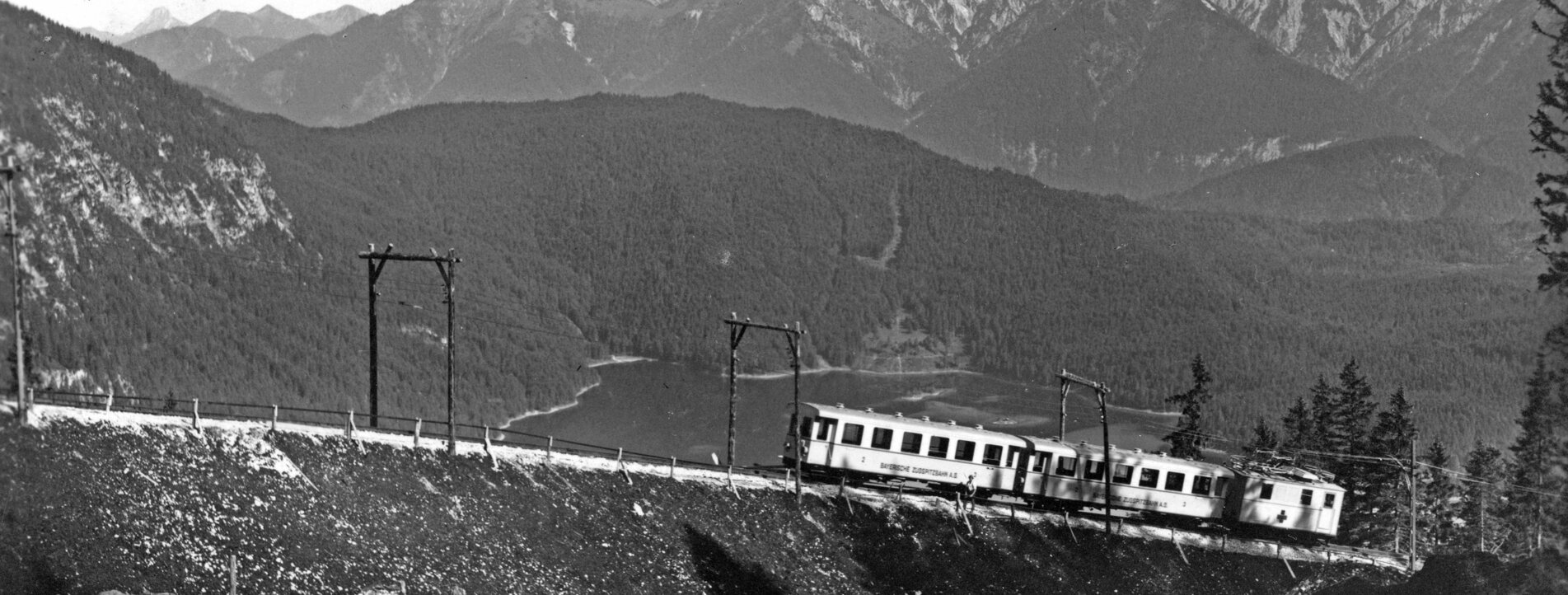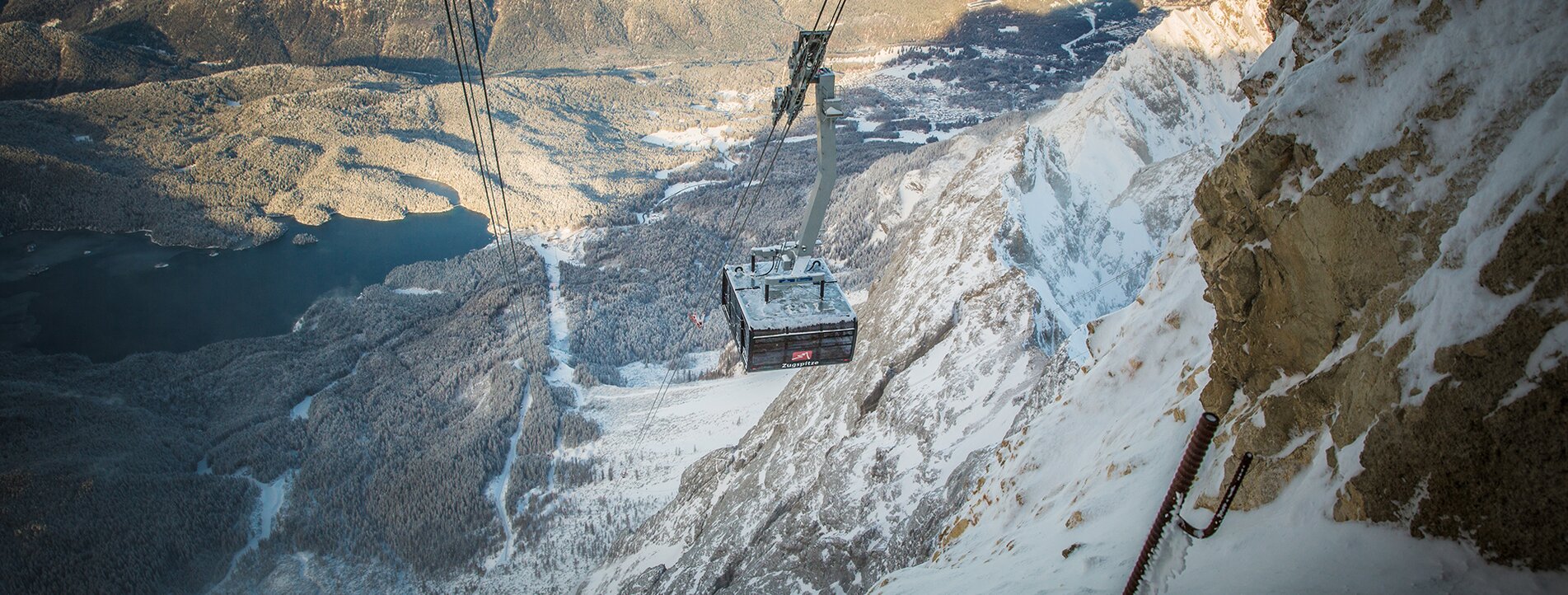Mountain railway excellence
for more than 90 years
The unceasing allure of the mountain railways
Technical masterpieces
Ever since the first ascent of Germany’s highest mountain, interest in the mountain railways on the Zugspitze, on Mount Wank and in the Garmisch-Classic area hasn’t ceased. One reason for people’s endless fascination with the cable cars and the cogwheel train: the pioneering feats and world records that have been achieved throughout the cable car company’s history.
Cable car Zugspitze
The world-record-holding cable car
A mountain railway to Germany’s highest peak: The construction of the Cable car Zugspitze is one of the great milestones in the history of Bayerische Zugspitzbahn Bergbahn AG.
Facts & figures
At a glance
- 6 years of planning and construction
- construction site at an altitude of almost 3,000 metres
- 50-million-euro investment
- 2 floor-to-ceiling glass cabins
- 120 people per cabin
- 580 people per hour
- heated windows: clear view even in bad weather
- unique views: At the summit, guests enjoy 360-degree scenic views of a total of more than 400 mountain peaks.
- simple, timeless design
Construction site on the mountain
at an altitude of 3,000 metres
The construction of the top station of the Cable car Zugspitze is considered an incredible feat.
The three biggest challenges during construction:
- Altitude: Deliveries and scaffolding were particularly tricky at an altitude of almost 3,000 metres.
- Weather conditions: Snow and ice, fog and continuous rain made work on site difficult.
- Logistics: There was only limited storage space at the summit. From concrete to steel girders, everything had to be delivered at exactly the right time. A special cableway was built just to transport the building materials to and from the top station.
The cable car experience
From the valley to the top
Highlights of the Zugspitze valley station
- Entrance area with a view of Lake Eibsee and the Zugspitze
- Barrier-free access: Entrance and exit to the cable car cabins are level with the platform.
- Comfortable, efficient entering and exiting of the cabins thanks to the movable central platform
Highlights of the top station
- Impressive views when getting on and off the cabins thanks to all-glass platforms
- Four levels for guests:
- access to the Gletscherbahn cable car
- “90 Years of the Cogwheel Train” exhibition
- gastronomic infrastructure
- summit terrace
- Extensive glass staircase on the south side, including seating steps
- Connectivity: Guests can reach Münchner Haus and the Tyrolean Zugspitzbahn via the summit terrace.
- Highlight: 360-degree scenic views of around 400 mountain peaks and the golden summit cross
A cable car of superlatives
With the Cable car Zugspitze to the top of Germany
Guided tours
Interesting facts about the Cable car Zugspitze
During the summer season, guided tours of the Cable car Zugspitze are offered daily at 9.45 a.m. and 3.00 p.m. On these occasions, the mountain managers provide information on the background, technology, operation and maintenance of the cable car, as well as on the complex construction process and the three world records. In the “90 Years of the Cogwheel Train” exhibition in the building of the top station, visitors can get detailed information about the traditional cogwheel train.
Meeting point: top station right in front of the entrance to the Gletscherbahn cable car (floor E0).
Cogwheel train
In operation for almost 100 years
Almost 200 years ago, Lieutenant Joseph Naus was the first person to climb the western summit of the Zugspitze. Since then, enthusiasm for Germany’s highest mountain has continued unabated. Plans for the construction of a cogwheel train to the Zugspitze plateau emerged early on. However, due to rejected concessions, economic crises and the turmoil of the First World War, the realisation of the project was delayed by several decades.
With the construction of the cogwheel train, the fundamental vision of the Bayerische Zugspitzbahn Bergbahn AG could be realised: make Germany’s highest mountain accessible to everyone. Since 1930, locals and tourists alike have been able to reach the Zugspitze plateau and the famous golden summit cross in comfort.
Facts & figures
Cogwheel train
- 2 years construction time
- Cost: 22 million Reichsmark
- From Garmisch-Partenkirchen, the train operates as a friction railway.
- From Grainau, the railway runs as a cogwheel train.
- Elevation gain between valley and top station: 1,010 metres
- Length: a total of 19 km from Garmisch-Partenkirchen to the Zugspitze plateau
- Tunnel construction: During the construction of the cogwheel train, it was necessary to create a 4,453-metre-long underground route. The workers had to dig through the mountain massif between Riffelriss and Schneefernerhaus.
- 80,000 m3 of rock material was transported to the outside via shaking chutes.
- Up to 2,500 workers were employed on the large construction site, sometimes under the most adverse alpine conditions.
